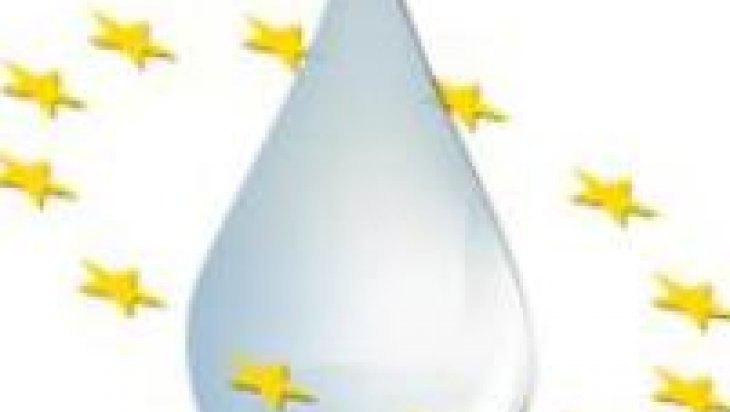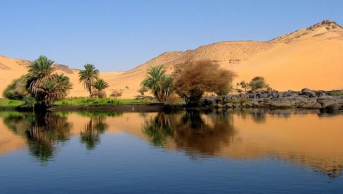EU Water Framework Directive towards the End of First Implementation Cycle: Disappointment and Hope

The European Union’s main water-related legislation, i.e. the Water Framework Directive (WFD) approaches to end of its first cycle of implementation. At its initiation, it was planned that water bodies in European Union, whether surface, ground, transitional, or coastal waters, should achieve the generic criterion of “good status” by the end of 2015. The current status of water bodies in Europe demonstrate a mixed picture. Slightly more than half of the water bodies are expected to meet the criteria as demanded by the Water Framework Directive. Therefore there is a sense of disappointment with the results. However, 2015 is not a exclusively final date to abide by WFD and related Directives (such as Nitrates, Urban Waste Water Treatment etc.), rather it could perceived also as the starting date of the second implementation cycle, which will last until 2021. This provides the ground for hope. All in all, much of the WFD-related efforts still remain to be done, because it is harder to achieve “good status” for water bodies that were not able to pass the “good status” benchmark in the first cycle.
Starting on the Water Day of 2015, on March 22, a conference convened in order to discuss the present conditions of water in Europe, as well as Communication from the Commission, “The Water Framework Directive and the Floods Directive: Actions towards the 'good status' of EU water and to reduce flood risks”. The Communication was adopted on 9 March 2015. It basically presents the most actual status of implementation of WFD and Floods Directive. The Communication summarizes that “we still have a long way to go before the quality of all EU waters is good enough, due to decades of previous degradation and persisting ineffective management.” It was already found by the 2012 Commission ‘Blueprint to safeguard Europe’s Water Resources’ that “half of EU surface waters are unlikely to reach a good ecological status in 2015”. This is now confirmed by the Communication. Stressing the significance of agriculture related pollution in water, which is the number one reason of diffuse pollution in European waters, it is declared by the Communication that “63% of river basin districts reported that implementation of the Nitrates Directive is not enough to tackle diffuse pollution to the level needed to secure WFD objectives”.
Urban Waste Water Treatment Directive represents a picture where dividing lines across Europe could be observed. While advanced countries of EU-15 (Member States prior to the 2004 enlargement) were rather successful in dealing with the household related pollution, the Communication underlines that there are serious shortcomings in newer Member States with regards to “financial” and “planning” aspects of the Directive-related tasks, despite significant efforts in the last ten years.
In relation to environmental flows, the European Commission, following analyses of River Basin Management Plans of Member States, stated that “most Member States have not addressed the water needs of nature, which they are required to do if the WFD environmental objectives are to be achieved. They often considered only the minimum flows to be maintained in summer periods, without taking into account the different factors that are critical for ecosystems to thrive and to deliver their full benefits.” According to Communication, these “different factors” might be related to flow magnitude, frequency, duration, timing and the rate of change of flood events.
The Communication then continues to present a number of recommendations which could enhance the implementation of WFD and related directives. First and foremost, the Communication urges Member States “to step up their efforts to base their Program of Measures on a sound assessment of pressures and impacts on the aquatic ecosystem and on a reliable assessment of water status.” Failing to do so, according to Communication, could poison the whole river Basin Management Plans. Second, identification of the most cost- effective combination of measures that are needed to fill in the gap between water’s current status and ‘good status’, should be done. Third, Member States need to review “existing permits, e.g. for water abstraction (including water rights), discharge, hydropower, etc.” with an aim of ensuring their compatibility with WFD objectives. Fourth, EU countries need to “strengthen their basic measures to tackle diffuse pollution caused by agriculture.” Fifth, the Communication underlines the need to take preventive measures against over abstraction from water bodies. Sixth, the Communication calls for developing monitoring and assessment methods in order to tackle with restoration and sustaining of the “ecological flows” as well as deal with physical changes that are linked to flow fluctuations. Seventh, “inadequate pricing of water” should be adjusted so that environmental and economic damage caused by inefficient water use could be prevented. Eighth, Member States need to improve cooperation at various levels (across national administrative, and international boundaries; and across different policy sectors). Ninth, EU funds should be utilized in order to support implementation of the European legislation.
To conclude, there is still a long way to go in order to fully comply with WFD requirements. Member States should shift their approach to WFD, and focus more on actions and follow-up works if they intend to achieve concrete improvements. Other than that, Member States will end up in the “proceduralisation” trap, which would continue to produce only marginal results This has recently been summarized by Giovanni La Via, who served as the chair of the European Parliament's Environment, Public Health and Food Safety Committee and was a keynote speaker at the high-level opening session at the fourth European Water conference held in Brussels in late March: “Member States need to go beyond the 'business as usual' approach and should really design the most appropriate and cost-effective measures to ensure that their water resources achieve good status as quickly as possible.”










